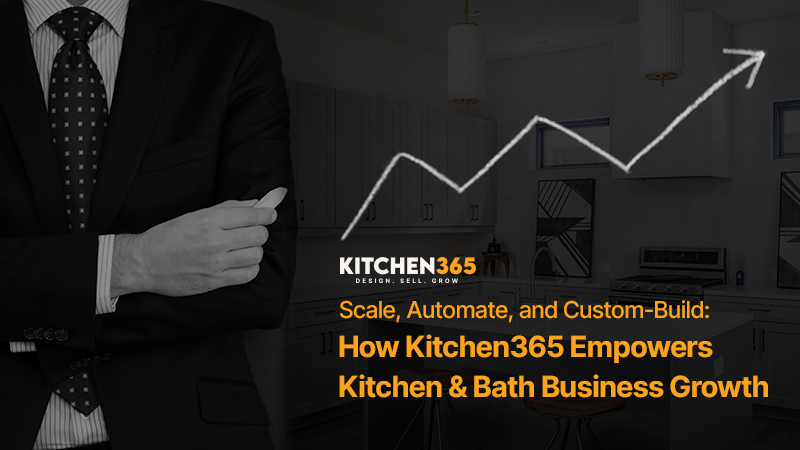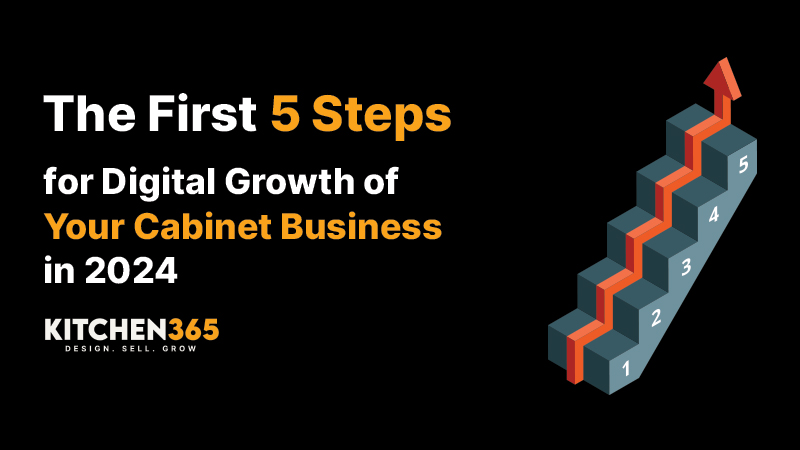

29 Oct End-of-Year Financial Planning for Kitchen and Bath Businesses
End-of-Year Financial Planning for Kitchen and Bath Businesses
Now is the perfect time to administer a financial health check-up. Taking the time to assess, organize, and plan will establish a strong foundation for success in 2026.
Audit income statements, balance sheets, and cash flow to find strengths and areas to improve. Clean up loose ends like:
- unpaid invoices
- vendor bills
- tax prep
- Use these insights to:
- create a forward-looking plan
- set a realistic budget
- define growth goals
- build a contingency fund
Don’t forget to evaluate operational efficiency and factor in industry trends like:
- sustainable materials
- smaller kitchens
- smart-home technology
Review Your Statements
Your financial statements are the backbone of your business’s economic health. Reviewing them is like examining the frame of a newly built kitchen. You’ll quickly see if everything is sturdy or if something is off balance.
Income Statement
This statement shows your revenue, cost of goods sold, and operating expenses. Look closely at your revenue streams:
- Which services were most profitable?
- Were any services unprofitable?
- Where can we cut unnecessary spending?
Understanding profitability by project or service type allows you to focus on what’s working while trimming inefficiencies.
Balance Sheet
A balance sheet provides an overview of your assets, liabilities, and equity. Ask yourself:
- Do you have excess inventory?
- Are there accounts receivable that are long overdue?
- Is the current level of outstanding debt sustainable when measured against your cash on hand?
Cash Flow Statement
Review your inflows and outflows carefully:
- Were there months when cash flow was tight?
- Were late client payments a consistent problem?
- Did unexpected costs eat into your profits?
This helps you anticipate and smooth out cash flow challenges. This prevents your team from scrambling mid-project.
Address Outstanding Issues
Don’t carry last year’s problems into the next. Before January arrives, take time to clean up loose ends.
Collections
Follow up on unpaid invoices. If payments continue to idle, think about offering small discounts for early payments in the future or charging late fees.
Payables
Timely payment is a two-way street: we need to pay our suppliers promptly, just as we want our clients to pay us promptly. Settling outstanding bills strengthens your vendor relationships.
Tax Preparation
Collect documentation for tax deductions. Make sure payroll and sales records are finalized and accurate. Not only does this reduce stress during tax filing, but it may also reveal opportunities for additional deductions.
Map Out Future Financial Goals
While looking backward for insights is necessary, the true value lies in using those findings to create a clear plan for the future. Those who come up with a formal financial plan are 16% more likely to achieve business growth.
Budgeting
Build a realistic budget based on this year’s performance. Consider upcoming investments like:
- Expanding your marketing to reach new homeowners or contractors.
- Upgrading design software to improve client presentations.
- Hiring additional staff to support larger projects.
- Stocking trending cabinet styles or sustainable materials to meet market demand.
SMART Goal Setting
Set goals that are specific, measurable, and achievable. Examples include:
- Open a second showroom within 18 months.
- Add a new eco-friendly cabinet line by the second quarter.
Contingency Fund
Every contractor knows projects don’t always go as planned. Create a safety net by setting aside a percentage of your earnings for emergencies. This reduces stress and keeps operations running smoothly, even when challenges arise.
Assess Operational Efficiency
Financial health is about how efficiently your business runs. The end of the year is a great time to ask:
- Do your project management tools help you track costs and timelines effectively, or is there room for improvement?
- Do your employees work efficiently, or do gaps in training cause costly mistakes?
- Could outsourcing certain services save time and reduce overheads?
Plan for Growth and Market Trends
The kitchen and bath industry is constantly evolving. Consumer preferences, material costs, and design trends all impact your bottom line.
- Rising demand for sustainable materials
- Smaller, more efficient kitchens
- Technology integration
A financial plan that embraces these trends effectively positions your business as modern and flexible.
Strengthen Relationships
While numbers are central to financial planning, relationships also play a major role in business stability.
- Clients: Follow up with past clients to thank them for their business and ask for referrals or reviews. Loyal clients can become your most effective marketing channel.
- Vendors: Build stronger relationships with your suppliers. Discuss upcoming projects, ask about bulk discounts, and share your growth goals to create mutually beneficial partnerships.
Final Thoughts
End-of-year financial planning is one of the most powerful tools you must ensure long-term success. By reviewing your financial statements, addressing outstanding issues and aligning your goals with market trends, you’re setting your business up for a profitable year.
Are you looking to invest in innovative enterprise solutions for digital marketing Grow your Business in 2026? Contact Kitchen365 today to schedule a strategy session!
Frequently Asked Questions
Why is end-of-year financial planning essential for my business?
This is a crucial financial check-up. This process helps you review the past year’s performance, identify what worked, and create a solid plan for the new year.
What financial statements should I focus on?
Review your Income Statement to track profitability, your Balance Sheet to check assets and liabilities, and your Cash Flow Statement to understand cash flow.
What are some immediate actions I should take?
Address outstanding issues before 2026. This includes collecting unpaid invoices, paying your suppliers, and organizing records for tax preparation.
How does a forward-looking plan help my business grow?
A forward-looking plan helps you align your finances with your goals. Create a realistic budget, set goals for growth, and establish a contingency fund for unexpected costs.
How do market trends and efficiency tie into this?
Financial health is about how your business runs. Evaluating operational efficiency and incorporating market trends into your plan positions your business for future success.






Sorry, the comment form is closed at this time.